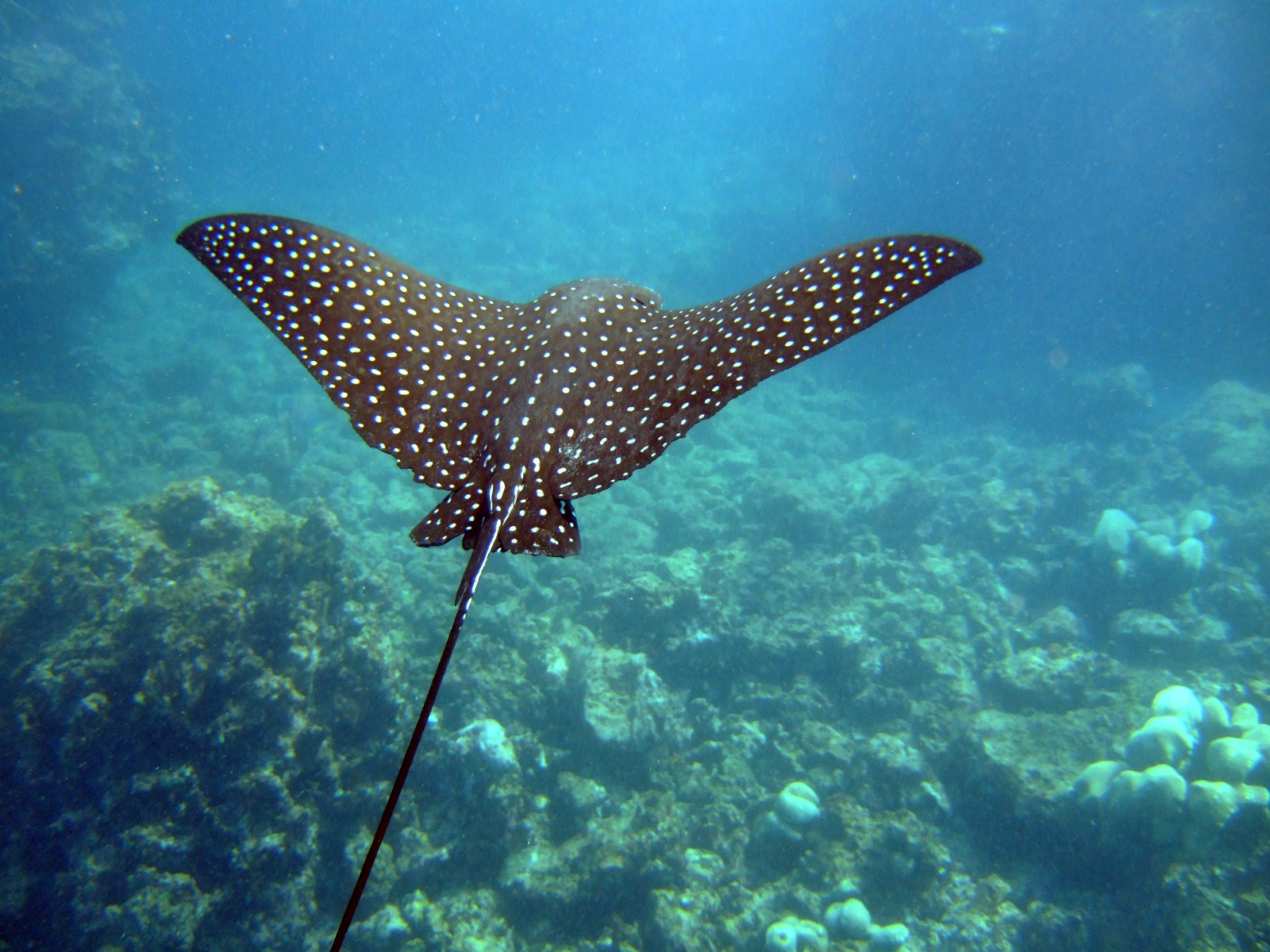General Information

Spotted Eagle Ray – Aetobatus narinari
Picture from: http://www.realmonstrosities.com/2016/02/spotted-eagle-ray.html
Taxonomy
Kingdom – Animalia
Phylum – Chordata
Class – Chondrichthyes
Order – Myliobatiformes
Family – Myliobatidae
Genus – Aetobatus
Species – Aetobatus narinari 1
Geographical rage

Spotted Eagle Rays are widely distributed around the globe but often reside in common temperatures and depths. The image above depicts the locations abundances of the species in red.2 More specifically, this species of rays can be found between “1 to 80 meters (3 to 260 ft) in tropical & sub-tropical marine open and coastal waters; occasionally found in brackish estuaries.”3 Published in 2009 in the Journal of Heredity, it was proposed that the wide-spread species should be broken down into two sub species. The researches suggested that “The latter 2 lineages, separated by the Isthmus of Panama, are proposed as subspecies. A basal position in phylogenetic analyses and statistical parsimony results support an Indo-West Pacific origin for the A. narinari species complex, with subsequent westerly dispersal around the southern tip of Africa into the Atlantic and then into the Eastern Pacific.”4
Additionally, some ranges that the species can be found in are as follows:
“Western Atlantic: Bermuda and North Carolina to southern Brazil, including Gulf of Mexico, Caribbean, and Antilles
Eastern Atlantic: Mauritania to Angola
Indo-Western Pacific: Red Sea and South Africa to Hawaii, north to Japan, and south to Australia
Eastern Pacific: Gulf of California to Puerto Pizarro, Peru, and the Galapagos Islands”5
Interesting Facts
- One recorded human death due to Spotted Eagle Ray jumping into boat6
- Burgers Zoo in Netherlands “holds the record for most births”7
- Have a venomous defense mechanism8
It was found that “The venom-containing barb attached to their ‘whip-like’ tail provides stingrays a
defensive mechanism for evading predators such as sharks. From human encounters, dermal
stingray envenomation is characterized by intense pain often followed by tissue necrosis occurring
over several days to several weeks. The bioactive components in stingray venoms (SRV’s) and their
molecular targets and mechanisms that mediate these complex responses are not well understood.”9
Sources
- https://www.thoughtco.com/spotted-eagle-ray-facts-4587348 ↩︎
- https://www.thoughtco.com/spotted-eagle-ray-facts-4587348 ↩︎
- https://seaworld.org/animals/facts/cartilaginous-fish/spotted-eagle-ray/ ↩︎
- https://doi.org/10.1093/jhered/esp005 ↩︎
- https://seaworld.org/animals/facts/cartilaginous-fish/spotted-eagle-ray/ ↩︎
- https://www.thoughtco.com/spotted-eagle-ray-facts-4587348 ↩︎
- https://www.thoughtco.com/spotted-eagle-ray-facts-4587348 ↩︎
- doi: 10.20944/preprints202402.1671.v1 ↩︎
- doi: 10.20944/preprints202402.1671.v1 ↩︎